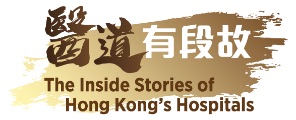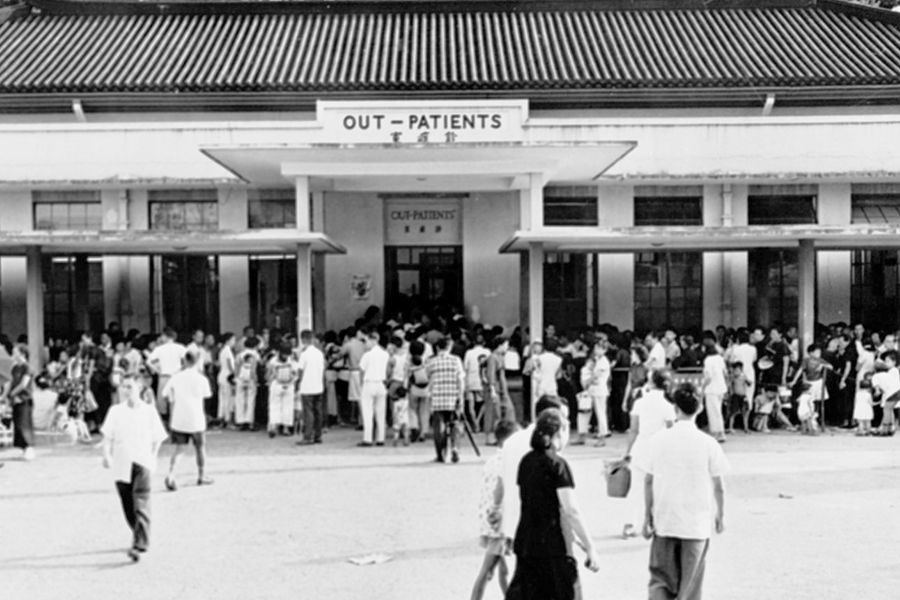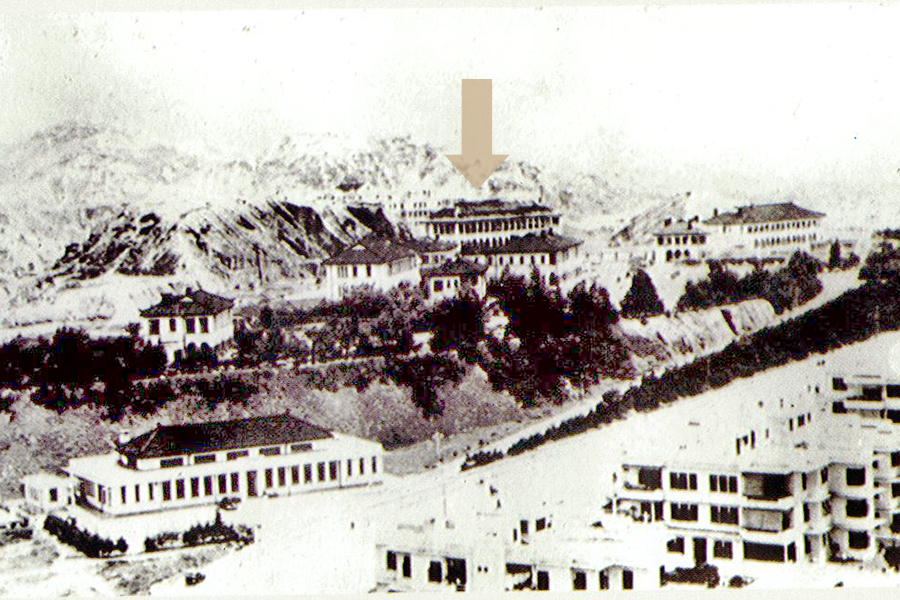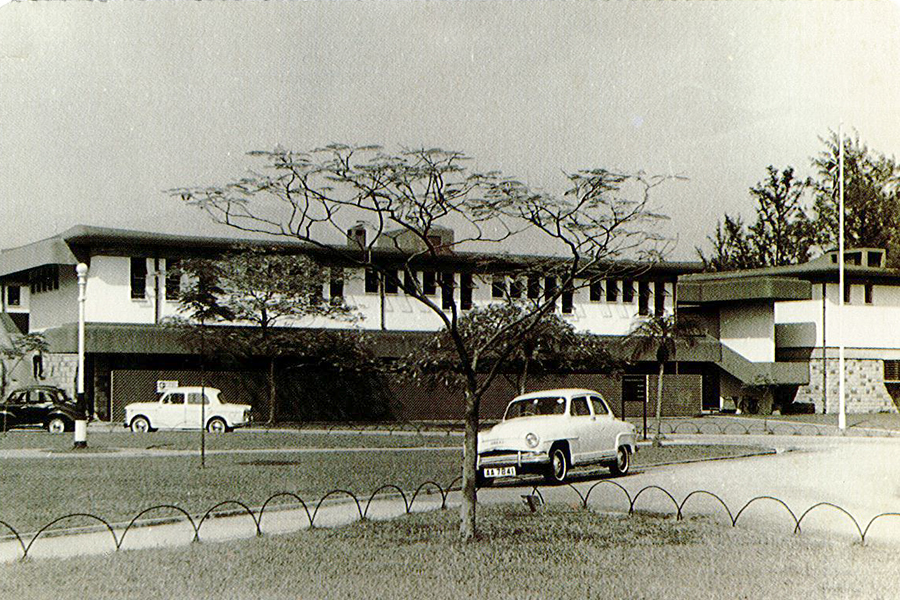
A century of Kowloon Hospital
Kowloon's first public hospital
 In the 1920s, the Kowloon Residents’ Association – formed by a group of expatriate residents – wrote to the Hong Kong government requesting a hospital capable of providing emergency medical services. This led to the founding of KH in 1925. Clinical services were only provided in – Block A and Block B – initially, and later in 1935, an outpatient clinic was added to serve patients from across the Kowloon Peninsula and the New Territories. The hospital was temporarily requisitioned as a military hospital during the Japanese occupation in the Second World War. With the service commencement of Queen Elizabeth Hospital, KH turned to a convalescent hospital.
In the 1920s, the Kowloon Residents’ Association – formed by a group of expatriate residents – wrote to the Hong Kong government requesting a hospital capable of providing emergency medical services. This led to the founding of KH in 1925. Clinical services were only provided in – Block A and Block B – initially, and later in 1935, an outpatient clinic was added to serve patients from across the Kowloon Peninsula and the New Territories. The hospital was temporarily requisitioned as a military hospital during the Japanese occupation in the Second World War. With the service commencement of Queen Elizabeth Hospital, KH turned to a convalescent hospital.
M for maternity
 Block M was built in 1932 and was originally the maternity block (arrowed). Because of a shortage of hospital wards, it served as general ward until 1935. In 1963, KH’s obstetrics and gynaecology services were relocated to Queen Elizabeth Hospital. Today, Block M serves as the Hospital Authority Academy.
Block M was built in 1932 and was originally the maternity block (arrowed). Because of a shortage of hospital wards, it served as general ward until 1935. In 1963, KH’s obstetrics and gynaecology services were relocated to Queen Elizabeth Hospital. Today, Block M serves as the Hospital Authority Academy.
A pioneer in prosthetics
 KH became a pioneer in prosthetics and orthotic devices when it established its Prosthetic and Orthotic Department at the Jockey Club Kowloon Rehabilitation Centre in 1963 (pictured above). In 1981, the hospital launched Hong Kong’s first prosthetist-orthotist training school which ran until 1998 when university degree programmes took over training. The hospital also played a key role in training nurses after opening a nursing school in the 1960s. It was suspended for a time before reopened in 2004 to train enrolled nurses, with the final intake of students in 2010.
KH became a pioneer in prosthetics and orthotic devices when it established its Prosthetic and Orthotic Department at the Jockey Club Kowloon Rehabilitation Centre in 1963 (pictured above). In 1981, the hospital launched Hong Kong’s first prosthetist-orthotist training school which ran until 1998 when university degree programmes took over training. The hospital also played a key role in training nurses after opening a nursing school in the 1960s. It was suspended for a time before reopened in 2004 to train enrolled nurses, with the final intake of students in 2010.
A film location for Echoes of the Rainbow
 The 2010 film Echoes of the Rainbow is set in Hong Kong in the 1960s and scenes depicting the eldest son of the Law family being hospitalised with leukaemia were filmed at KH. The photo on the right shows the former dispensary while the photo on the left shows the hospital’s grey-brick corridor, both were featured in the movie.
The 2010 film Echoes of the Rainbow is set in Hong Kong in the 1960s and scenes depicting the eldest son of the Law family being hospitalised with leukaemia were filmed at KH. The photo on the right shows the former dispensary while the photo on the left shows the hospital’s grey-brick corridor, both were featured in the movie.
A perfect venue for outdoor events
 The hospital’s expansive lawn, sports ground and outdoor space make it an ideal venue for outdoor events. The photograph on the left captures the sports day held in 1968, while the one on the right shows a fun day for staff and their families in the 1990s. To celebrate the KH’s centenary, a Community Health Carnival will be held on the lawn at the end of the year.
The hospital’s expansive lawn, sports ground and outdoor space make it an ideal venue for outdoor events. The photograph on the left captures the sports day held in 1968, while the one on the right shows a fun day for staff and their families in the 1990s. To celebrate the KH’s centenary, a Community Health Carnival will be held on the lawn at the end of the year.
Hong Kong's father of forensic pathology
Hong Kong’s first forensic pathologist Dr Pang Teng-cheung worked in KH’s Casualty Department in the 1940s. His outstanding performance earned him a government-sponsored opportunity to study forensic pathology in the United Kingdom. When he returned to Hong Kong in 1949, he established the city’s first forensic laboratory at the police headquarters, providing expert medical evidence for criminal investigations.Interview video